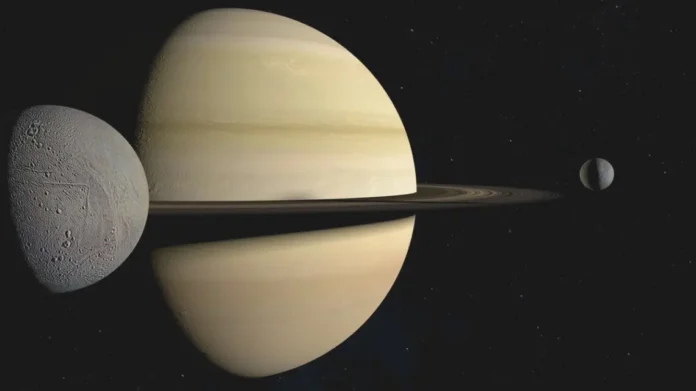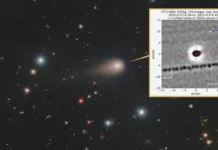A Month Full of Cosmic Wonders
As autumn settles in, the nights of October 2025 promise more than crisp air and colorful leaves. This month’s night skies are filled with rare astronomical events that will fascinate both seasoned astronomers and casual skywatchers. From a brilliant supermoon to spectacular meteor showers, and from planetary encounters to distant galaxies shining through the darkness, October brings a celestial show you won’t want to miss.
Here’s a complete guide to the 9 most exciting sky events in October 2025 – mark your calendar and prepare to look up.
1. Andromeda Galaxy Meets Ceres – October 2
The first big event arrives early in the month. On October 2, the majestic Andromeda Galaxy (M31) reaches its highest point in the night sky. Even without a telescope, on a dark and clear night, you may spot a faint fuzzy patch with the naked eye. With binoculars or a telescope, its spiral arms become more noticeable, reminding us of our galaxy’s distant neighbor that will one day collide with the Milky Way.
On the same night, Ceres, the largest object in the asteroid belt, shines at its brightest. Appearing as a small but sharp point of light, Ceres will be visible around midnight, offering a unique chance to see a galaxy and a dwarf planet on the same night.
2. The Moon Joins Saturn – October 6
On the evening of October 6, a nearly full Moon will align with Saturn, the planet famous for its majestic rings. The pair will appear just three degrees apart, making them look almost side by side in the night sky.
Adding to the intrigue, Saturn is currently in retrograde motion, appearing to move backward against the stars due to Earth’s orbital path. This unusual motion makes the planet even more exciting to observe throughout the month.
3. The Harvest Supermoon – October 7
One of the most anticipated events of October is the Harvest Supermoon, arriving on October 7. A supermoon occurs when the Moon is at its closest point to Earth (perigee) during the full moon phase.
This makes the Moon appear up to 14% larger and 30% brighter than usual. Traditionally, the “Harvest Moon” was the full moon closest to the autumn equinox, providing extra light for farmers working late into the night. Today, it’s more of a visual treat and photography favorite, illuminating the night with breathtaking brilliance.
4. Draconid Meteor Shower – October 8
Just one night after the supermoon, the Draconid Meteor Shower peaks on October 8. Originating from the debris of the comet 21P/Giacobini-Zinner, this shower can sometimes produce dazzling bursts of meteors.
However, this year’s peak follows immediately after the bright supermoon, which may outshine many of the fainter meteors. Still, patient observers looking toward the Draco constellation in the northwest may catch several bright shooting stars streaking across the sky.
5. The Moon Meets the Pleiades – October 11
On the morning of October 11, the Moon will pass near the Pleiades star cluster (also known as the Seven Sisters). Despite the Moon’s brightness, the cluster’s six brightest stars should still be visible to the naked eye, while telescopes reveal the cluster’s thousands of stars.
For centuries, the Pleiades have been an important cultural and mythological reference point across civilizations. Seeing them side by side with the Moon offers both a spiritual and scientific thrill.
6. The Triangulum Galaxy Rises – October 16
Mid-month brings another deep-space gem: the Triangulum Galaxy (M33) on October 16. Located about 3 million light-years away, it is the third-largest galaxy in our local group, after the Milky Way and Andromeda.
While challenging to see without equipment, dark-sky locations may allow observers to glimpse it with the naked eye. Through a telescope, its spiral structure comes alive, making it one of the best galaxy-viewing opportunities of the year.
7. A Venus-Moon Conjunction – October 20
The early hours of October 20 will reward early risers with a beautiful conjunction between Venus and the Moon. The two bodies will be less than four degrees apart, shining together in the eastern sky before sunrise.
Venus, often called the “Morning Star,” will dazzle with its unmatched brightness, outshined only by the Sun and Moon. Together, the pair will form one of the most romantic celestial displays of the month.
8. The Orionid Meteor Shower – October 21
Perhaps the most famous meteor shower of the month, the Orionids, peak on October 21. These meteors are remnants of the legendary Halley’s Comet, and they often appear fast and bright, leaving glowing trails behind them.
The best part? This year, the peak coincides with a new moon, ensuring perfectly dark skies. Under ideal conditions, you might see 20 or more meteors per hour, making this one of October’s top stargazing highlights.
9. Mercury at Greatest Elongation – October 29
October ends with a final treat: Mercury at its greatest eastern elongation on October 29. Usually hard to spot due to its closeness to the Sun, Mercury will appear farther away from the glare, making it visible just after sunset in the western sky.
Though fleeting, this glimpse of the solar system’s fastest planet is a rewarding way to conclude the month’s cosmic celebrations.
Final Thoughts: A Month to Look Up
From a supermoon lighting up the night to meteors blazing across the sky, October 2025 offers an extraordinary series of events for stargazers. Whether you’re an experienced astronomer with a telescope or simply someone who loves gazing at the night sky, this month’s celestial calendar guarantees unforgettable moments.
So, prepare your binoculars, find a dark spot away from city lights, and let the universe remind you of its endless beauty.
read also
The Sun’s Unexpected Awakening: NASA Warns of Intensifying Solar Activity




